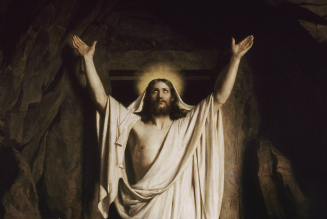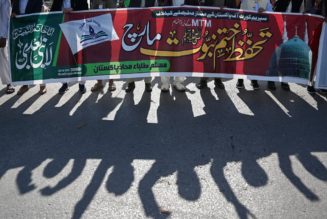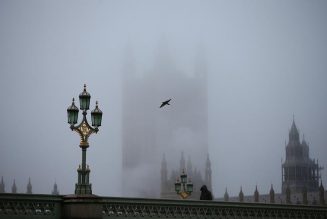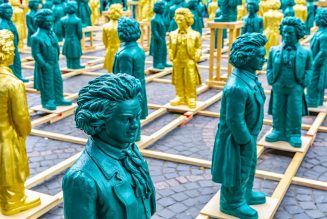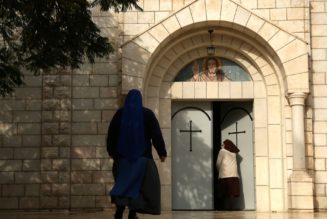One of the great figures of Iberian Catholicism, St. John of God (1495-1550), was born João Duarte Cidade in Montemor-o-Novo, Portugal. As an 8-year-old, he disappeared, with some sources saying a visiting priest enticed him to follow him in his travels and others that he was kidnapped. In any event, his disappearance from home seems to have caused his mother’s death and his father’s joining the Franciscans.
In any event, the priest and the boy seem to have separated, with John left the boy in the care of a shepherd in Oropeza, Spain. The shepherd raised him and apparently pressed him eventually to take his daughter in marriage. John opted to join the Holy Roman Emperor’s Army, bound for Austria to fight the Turks. For a while — but only for a while — John’s spirit for adventure seemed to find a place in the excitement (and gambling) of military life.
But, as St. Augustine reminds us, “our hearts are restless until they rest in Thee,” and John’s was a restless heart. After his military adventures, João went through a variety of trades and places to live, including returning as a shepherd to Seville and journeying to Iberian colonies on the Moroccan coast to work for the freeing of Christian slaves from the Moors. Finally, having fallen in love with reading Christian books (remember that printing was slightly older but still becoming as broadly popular in John’s day as the internet has become in ours), John took up the trade of book seller, selling religious books, in Gibraltar (then still part of Spain) and later Granada. (João claimed to have had a vision of the Infant Jesus giving him the name John, a change-of-name a bishop would later confirm.)
Having heard St. John of Avila preach on repentance, John was so moved to conversion that his behavior — closing down his bookstore to weep in public in ragged clothes — resulted in his being taken to a hospital for lunatics. St. John of Avila personally visited him there and counseled him (people need spiritual direction to ensure their balance) and gradually John began to find spiritual equilibrium. Seeing the need around him in that hospital, however, he also began to volunteer with attending the sick. That would be a decisive moment in his life: John would dedicate himself to the care of the sick, the ministry for which he remains known today as a saint.
After leaving the hospital, John rented a house that became his hospital. He didn’t wait for patients: he scoured Granada and brought the sick he encountered to his hospital, sometimes even carrying them on his back. Tradition holds that St. Raphael the Archangel, revered as one who cared for and cured the sick, even helped him. His example helped others: two men who were in public enmity with each other while sharing common dissolute lives, Antoni Martin and Pedro Velasco, were reconciled to each other and became the nucleus of the new order that John was establishing. The bishop confirmed he order, gave John a habit (it’s claimed because otherwise he gave his cloak to every beggar), and confirmed his name change as John. That order would be the Brothers Hospitallers of St. John of God.
John scrounged supplies, worked with the poor, widows and orphans, the unemployed, and prostitutes. He spent 13 years in his work with the sick and needy. He is most known for his reaction when a local hospital caught fire. Bystanders did nothing. Disregarding his own safety, John rushed into the burning building to carry out patients. After having done that, he began throwing pillows and blankets out of the windows, mindful of what it took to get supplies. Finally, it’s said that when the local authorities planned on shooting a cannon at the burning edifice to level it, John stood on the roof and, with an axe, separated the burning part of the building from that which had not yet ignited. He emerged unscathed. A subsequent biographer explained it thusly: “The flame of Divine love which burned in his heart surpassed the intensity of the material fire.” That’s why he’s deemed not just a patron saint of the sick (and of booksellers) but of firefighters.
When a local river was seen to be carrying driftwood, John and his companions went to gather it as useful supplies. When a boy fall into the river and was caught in its current, John leaped in to try and rescue the lad, but came down with pneumonia, the cause of his death. The same city that had earlier put him in a hospital asylum mourned his death. He was canonized in 1690.
One writer described John’s life as “impulsive” and, indeed, at times his impulsiveness led to screeching changes of direction in that life. But while some might say he never learned “impulse control,” that’s not quite true: John’s impulsiveness, which did not disappear, came to be controlled by love. It is charitable love that leads a man to run into, not from a burning building in order to save others, not himself. It took charitable love to jump into a river in wintertime to try to save someone, even when the result led to his own death. For whatever faults he had, John of God illustrates how charity indeed covers a multitude of sins.
Our saint, who is especially popular in the Iberian world, is depicted in two paintings. The great Spanish painter Bartolomé Esteban Murillo (1617-1682) depicts the beginnings of John’s ministry to the sick in an oil painting (see image above) from around 1672 held by a charitable hospital in Seville. John, wearing the habit the bishop had given him, is struggling along with a sick man on his back, bearing him to his hospital. Suddenly, he feels a helping hand and, looking back, he sees the Archangel Raphael (often misattributed by some commentators as Gabriel) stepping out of the darkness to assist him to bear his load. (Apart from his identification with caring for the sick, e.g., Tobit and his father, Raphael is often shown in gold. The name “Raphael” itself means “God has healed.”) Both the sick man and the Archangel frame John, making him the “center of attention” of the painting. Look also at the hands, because Murillo makes an important point: by love John not only embraces the sick man, but is himself embraced.
From the other end of the Iberian world comes Juan Zapaca Inga, a 17th-century Peruvian artist associated with an artistic school forming there around the local Franciscan monastery. (Peru was the capital of Spanish South America.) The large oil painting (see image below), 5 feet by 8-1/2 feet, dated from about 1685 and now held in the Lima Art Museum, is attributed to Zapaca Inga. It depicts the death of John. John, in his habit, kneels before an altar, cradling the cross. His face, especially his eyes, show he is already at the limits of his strength. A skull on the altar reminds him, “memento mori!” (Remember, man, you will die!)
But as this world prepares to say farewell to him, the next is readying a welcome. Two cherubs read a scroll (the book of his life?), one smiling in his direction. Two others play a welcome, roses falling. The background fades into openness as time and eternity meet. A large angel (the Angel of Death? Raphael? supports the dying saint and looks at him with love). The man who could carry the sick will now be carried home.
(For more on St. John of God, see here, here and here.)


